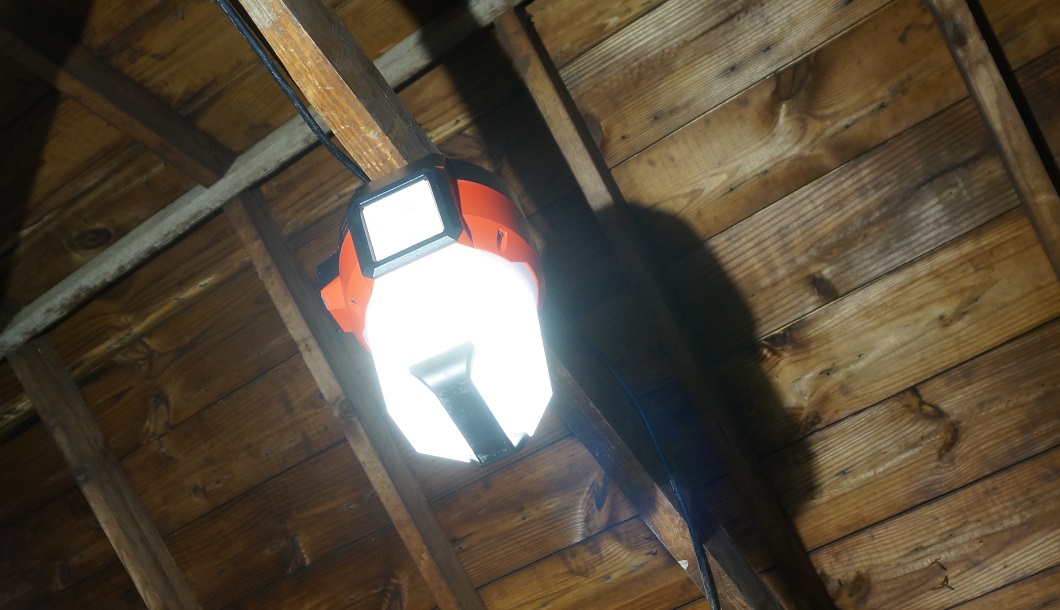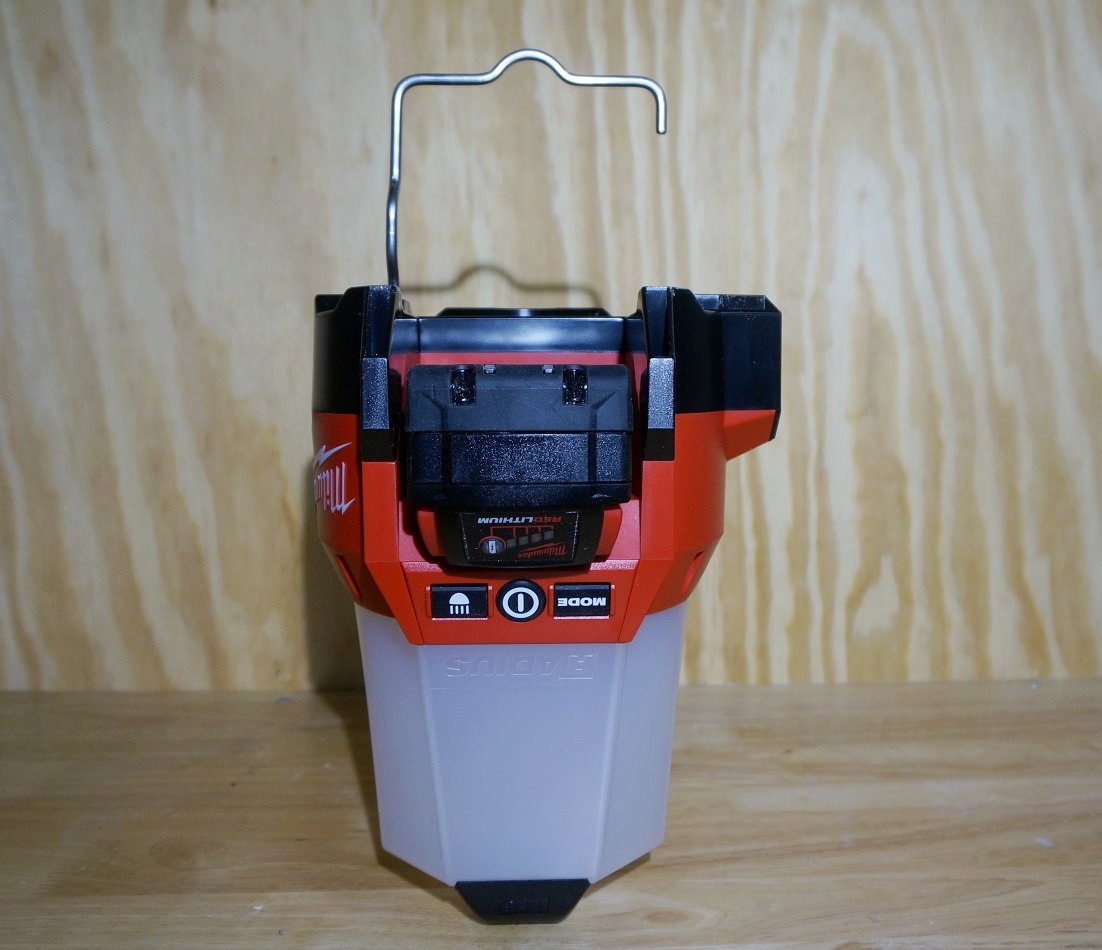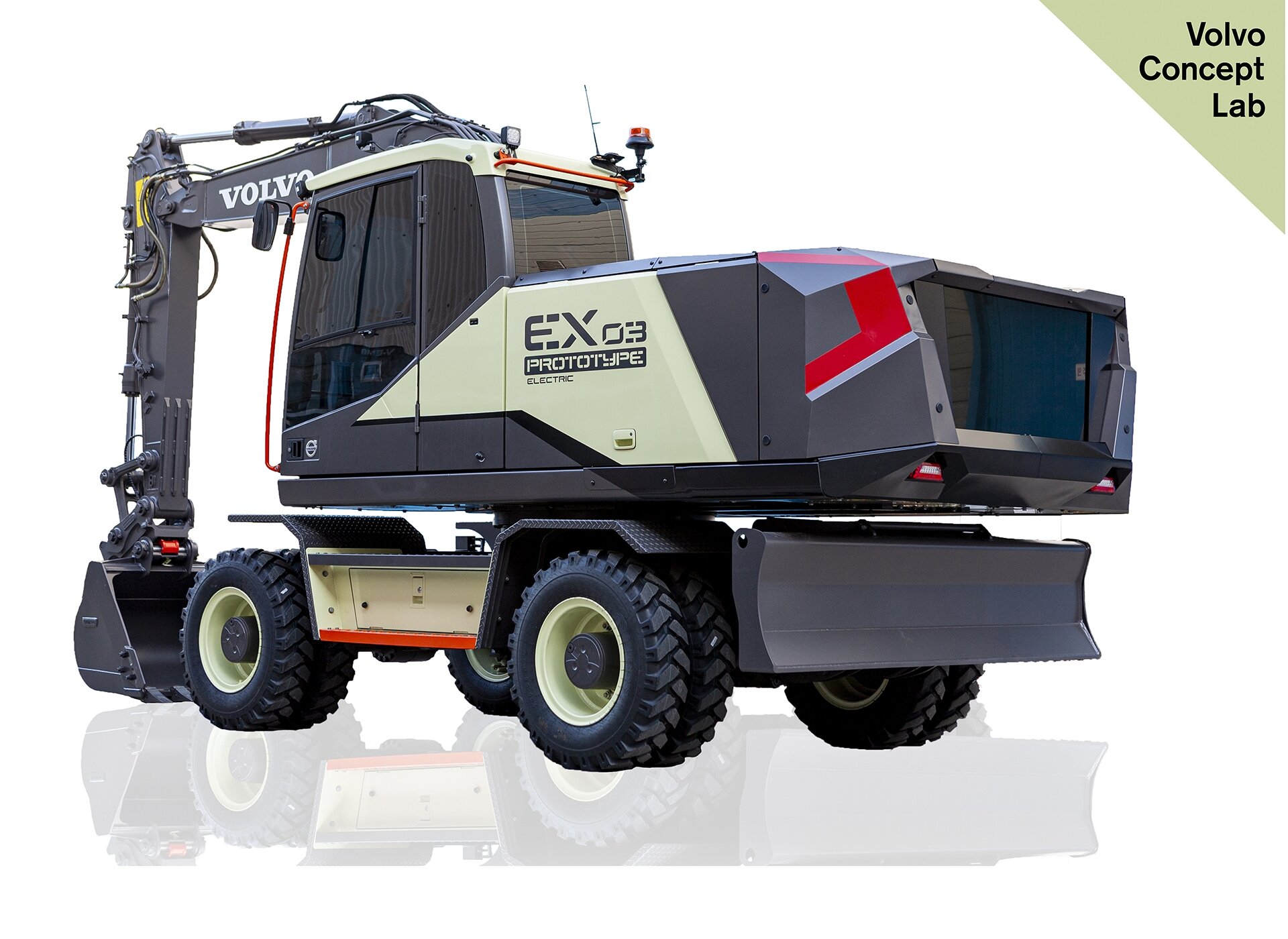Proper lighting is one of the most overlooked things on a construction site. Sure, most sites have some overhead lighting, but with a minimum of only 5 loot candles required by OSHA in general construction areas, there’s a lot left to be desired. Milwaukee Tool is, by far, the leader in the construction lighting category based on shear volume and quality of their lighting solutions.
One of Milwaukee’s most recent lighting releases is their extremely versatile M18 Radius LED Compact Site Light with Flood Mode. It’s a combination of two of their other lighting options, both of which I think are great options. It combines the area lighting mode that the M18 Compact Radius Light (2145-20) does and the more directional flood lighting that the M18 Rover Mounting Flood Light (2365-20) does.
Compared to the M18 Radius Compact Site Light (2145-20)
Milwaukee 2145-20 (left) and 2144-20 (right)
The first thing you’ll notice if you compare the original Radius site light to the new Radius with flood mode is the size and weight difference. The 2145-20 weighs in at 10.6 pounds and the new 2144-20 weighs less than half of that at 4.3 pounds. With the smaller size, you will get less light, however, as the new light has a max output of 2,200 lumens on high in area lighting mode compared to the 4,400 lumens that it’s larger brother puts out.
To make up for the lower lumen output, the new 2144-20 can not only operate in area lighting mode, but also has a flood mode for more direct, focused lighting.
Both lights have a low, medium, and high setting and a helpful hanging hook on the bottom (although I do prefer the hook on the new 2144-20, as it’s a little larger and can be used to tilt the light when sitting on the ground). Both can be run off of AC power if you don’t want to use batteries, but the older 2145-20 can be daisy chained to power up to 10 lights at the same time. The new 2144-20 does not have daisy chain abilities. Neither lights charge the batteries while plugged in.
Although Milwaukee states that the new 2144-20 light is made of a “high impact polycarbonate lens design can survive harsh jobsite conditions, and is impact and chemical resistant,” it is not IP Rated, unlike the 2145-20, which is rated IP54.
Finally, the new and more compact 2144-20 ($149) is priced $100 less than the 2145-20, which is $249. Both are bare tool prices. You can’t go wrong with either light, it will just come down to your overall needs. If you need a lot of light or plan to daisy chain several lights together, the older 2145-20 may be best for you. If you need a more conveniently sized, more versatile, and less costly light, the 2144-20 may be a better fit.
Compared to the M18 Rover Mounting Flood Light (2365-20)
Milwaukee M18 Rover 2365-20 (left) and Compact Radius 2144-20 (right)
Again, the first thing you’ll notice about the 2144-20 versus the M18 Rover 2365-20 is the size difference. The M18 Rover is a much smaller cube than the more upright compact radius. The Rover is also slightly lighter than the new radius, weighing in at 3.24 pounds versus 4.3 pounds. The Radius light once again has less lumen output than the Rover when on flood mode setting (1000 lumen max vs. 1500 lumen max on the Rover), but the Radius is about versatility.
Mounting capabilities is a major difference between these two options. As mentioned above, the Radius has a metal hook on the bottom, but the Rover offers a high strength magnet and clamping option. The Rover’s mounting options are great for those of you who work around metal a lot, like plumbers and HVAC techs, or for those who work on scissor and boom lifts often.
The clamping mechanism will allow mounting to 2x material, like the Radius’ hook will, but it’s much more difficult to mount and is definitely a two-handed operation. The magnet on the Rover will only work with batteries 5.0Ah or smaller, as the 9.0Ah is too big. The larger battery will still work for extended run time, but you won’t be able to mount it.
The M18 Rover light, unlike the Radius, is rated IP54, with an impact rating of up to a 9 foot drop. The Rover ($99 bare tool) is also a little less expensive than the Radius ($149 bare tool).
I love both of these lights, but the light that’s right for you once again comes down to your typical work environment. If you need overhead or floor lighting, the Radius would be a better option, but if you need directed light at different heights, the Rover may work best for you.
Breakdown of the M18 Radius Compact Site Light w/ Flood Mode (2144-20)
Milwaukee M18 Radius Compact SIte Light w/ Flood Mode (2144-20)
If you’re only in need of one lighting solution for your jobsite, you really can’t go wrong with this new Site Light with Flood mode. It’s the ultimate Goldilocks situation: it’s not too big, not too small, it’s just right. The best of both world’s combined into one.
There are a few opportunities that I think the 2144-20 has, especially the IP rating. One of the first things that stuck out to me was the fact that the AC inlet does not have a cover on it like it’s big brother, the 2145-20 does. I also wish that there was a threaded insert to accept a tripod, which would have been an inexpensive upgrade that would have made the light even more versatile. There could possibly one in the future, but I always love a ONE-KEY option on the lighting options, especially for those made to hang overhead. That would obviously make the light more expensive.
Specifications
Area Lighting:
- 2,200 Lumens on high (7 hours*/ 4 hours**)
- 1,100 Lumens on Medium (15 hours/ 8 hours)
- 550 Lumens on Low (30 hours/ 16 hours)
Flood Lighting:
- 1,000 Lumens on high (10 hours*/ 6 hours**)
- 500 Lumens on Medium (22 hours/ 12 hours)
- 250 Lumens on Low (43 hours/ 24 hours)
AC inlet
4-1/4” hanging hook
4.3 lbs.
*Run-time with the M18™ REDLITHIUM™ HIGH DEMAND™ 9.0 Battery
** Run-time with the M18™ REDLITHIUM™ XC 5.0 Battery














Last summer, Hilti announced that they had developed their first exoskeleton designed for construction tradespeople in a partnership with Ottobuck, a prosthetics, orthotics, and exoskeleton provider. Earlier this month, Hilti officially released the exoskeleton, announced more details, and published its retail price on their website.